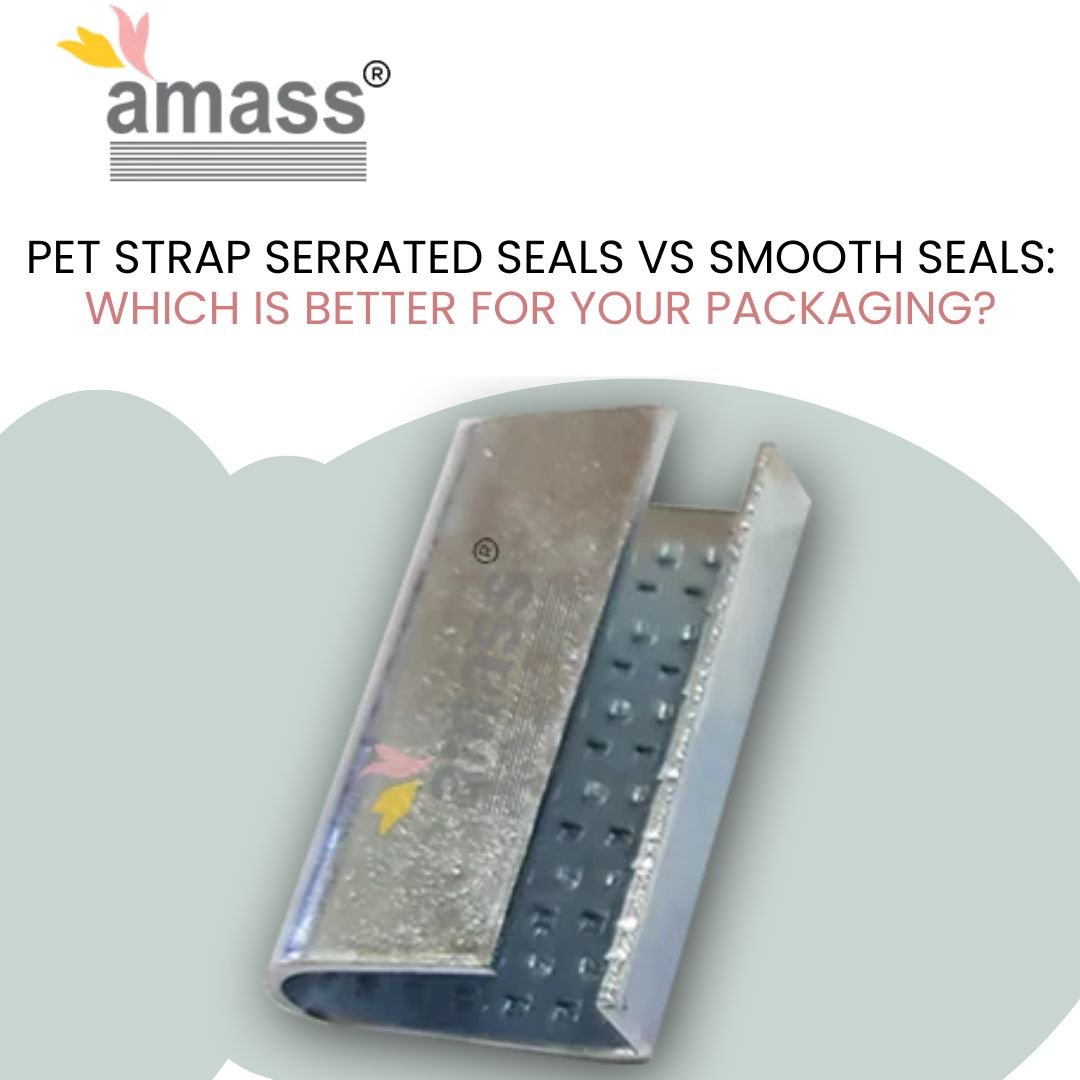PET Straps vs. Steel Straps: Which One is Right for You?

Why Food Packaging Solutions are Crucial for Safety & Shelf Life?
August 25, 2025
Choosing the Right Strapping: 3 Key Materials and Their Best Uses
August 26, 2025Over 1.6 million metric tons of PET straps were consumed globally in 2024, yet countless businesses still default to steel strapping like it’s 1985. Here’s the uncomfortable truth: while you’ve been debating marginal cost differences, your competitors discovered that the real money isn’t in the material price—it’s in everything else.
The strapping decision isn’t just about holding boxes together. It’s about labor efficiency, safety liability, equipment downtime, and supply chain resilience. Get this wrong, and you’re not just overpaying—you’re handicapping your entire operation.
The Hidden Math: Cost vs. Total Value
Traditional steel strapping is the most expensive material upfront, but that sticker shock masks a deeper problem. Steel’s true cost lives in the operational shadows: heavier freight charges, specialized handling equipment, and the productivity drain of constant coil changeovers.
PET strapping flips this equation. PET strap is a less expensive alternative to steel strap, as it has lower strength packaging requirements, but the real value emerges in yield efficiency. Consider this: a single PET coil often delivers 40-60% more linear feet than comparable steel, dramatically reducing changeover frequency and machine downtime.
For example, Amass PET straps are designed with extra yield per roll, helping reduce coil changeovers and downtime — a hidden cost many overlook when calculating true operational expenses.
Safety Revolution: When Workers Actually Matter
Steel strapping doesn’t just cut—it maims. Sharp edges, recoil tension, and the specialized tools required create a workplace hazard matrix that insurance companies love to exploit. PET eliminates these risks entirely while delivering comparable holding strength for most applications.
The ergonomic advantage is equally compelling. Steel requires heavy-duty tensioning equipment and protective gear. PET straps integrate seamlessly with lightweight, portable tools that reduce worker fatigue and increase throughput. Your team moves faster, works safer, and goes home intact.
Performance Under Pressure: Elasticity vs. Rigidity
Here’s where conventional wisdom breaks down. Unlike strapping made from steel, Polyester strapping having its very high elongation, is able to absorb shocks and impacts during transportation and handling far better than steel strapping is capable of.
Steel’s rigidity—often seen as strength—becomes a liability under dynamic loads. Temperature fluctuations, vibration, and handling impacts can cause brittle failure. PET’s controlled elasticity provides superior shock absorption while maintaining consistent tension throughout the supply chain journey.
Weather resistance tells a similar story. Steel corrodes, especially in humid or marine environments. PET remains chemically inert, maintaining structural integrity regardless of environmental conditions.
The Load Profile Matrix: Matching Material to Mission
Heavy Industrial Loads (5,000+ lbs)
Steel still dominates for extreme-duty applications: steel coils, construction materials, and machinery transport where break strength trumps all other considerations.
Medium-Duty Transport (1,000-5,000 lbs)
This is PET’s sweet spot. PET straps are commonly used for heavy loads requiring high tension and are frequently chosen as a cost-effective and safer alternative to steel straps in packaging, automotive parts, and general manufacturing applications.
Precision/Fragile Loads
PET’s controlled stretch prevents over-tensioning that can damage delicate goods while providing secure containment.
Quick Decision Checklist:
- Weight > 5,000 lbs + outdoor storage: Steel wins
- Automated lines + safety priority: PET dominates
- Mixed load types + operational flexibility: PET scales better
Workflow Efficiency: The Operational Reality
Modern strapping is about system integration. PET straps work seamlessly with automated and semi-automated strapping equipment, enabling higher throughput with minimal operator intervention.
Compared to other strapping materials such as steel, polyester straps provide comparable strength while being significantly lighter. This weight advantage translates directly to faster material handling, reduced equipment stress, and lower energy consumption across the entire strapping process.
Circular Economics: End-of-Life Strategy
Majority of polyester comes from recycled materials, providing environmental care while creating up to 40% less packaging waste and lowering transportation costs. Steel recycling, while established, requires energy-intensive processing and specialized logistics.
PET’s recyclability is becoming a supply chain requirement as major retailers implement circular packaging mandates.
Market Reality: Future-Proofing Your Decision
The global strapping materials market size was valued at USD 6.2 billion in 2022 and is anticipated to grow at a CAGR of 4.9% from 2023 to 2030, with PET driving the majority of this growth.
Steel strapping remains vulnerable to commodity price volatility, trade tariffs, and supply chain disruptions. PET offers price stability and consistent availability through diversified global production networks.
The Decision Framework
Choose Steel When:
- Load exceeds 5,000 lbs consistently
- Extreme temperature applications (-40°F to +300°F)
- Outdoor storage exceeds 12 months
- Break strength is the primary specification
Choose PET When:
- Worker safety is a priority
- Automated systems are involved
- Total cost of ownership matters more than material price
- Load protection during transport is critical
- Environmental compliance is required
Bottom Line: Your Competitive Edge
PET straps are primarily used in transportation applications because smart operators recognized that holding power means nothing if your workers are injured, your equipment is down, or your costs are out of control.
Steel still owns the extreme-duty niche, but for 80% of industrial strapping applications, PET delivers superior total value.
If you’re ready to explore PET as a replacement for outdated steel strapping, Amass Strap supplies next-gen PET solutions trusted worldwide. Talk to our team today.


